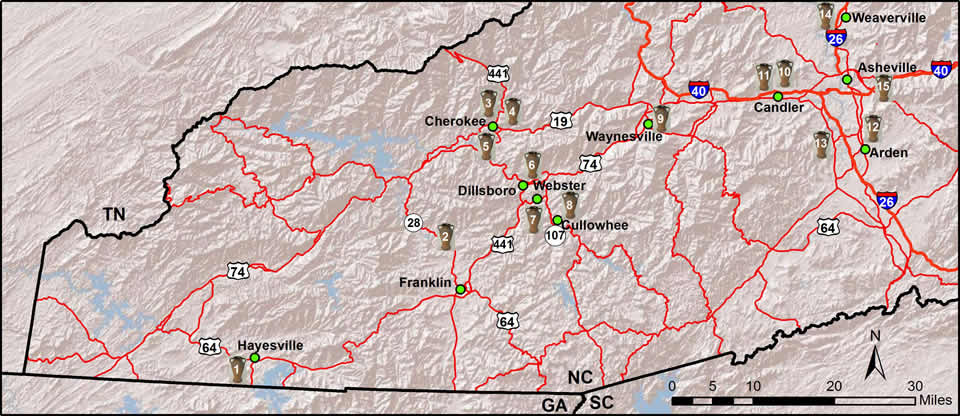The Crafts:
Pottery Traditions
Today it is hard for us to appreciate the importance that pottery played in the lives of people prior to the mid 20th century. As late as 1932, a woman from western North Carolina recalled, “I had four or five children before I ever saw a glass can.” Pottery filled the need for containers of many types. Stoneware crocks were used for food preparation and storage, plates and bowls were used on the table, and vases graced homes that could afford them.
Beginning in the early 19th century, several potteries served western North Carolina and surrounding areas. For well over 100 years, they continued to produce much-needed utilitarian ware. Long after other containers became available, pottery continued as a locally made alternative to factory produced glass and metals. At the start of the 20th century, and fueled by the success of an international Arts and Crafts movement, a few local potteries began to develop a more individualistic style that came to be known collectively as “art pottery.”

Online Resources
Western Carolina University Online
Hunter Library at Western Carolina University hosts a number of digital collections that function as an open access, digital archive and interactive web resource. Extensive research on the region's pottery can be found on several Hunter Library websites, including the Craft Revival, Cherokee Traditions, and Stories of Mountain Folk. The archive contains thousands of images, historic documents, vintage photographs, and sound recordings that can be accessed from any computer through the World Wide Web.
https://www.wcu.edu/hunter-library/find/digital-collections.aspx
Traditional Artist Directory
The Blue Ridge National Heritage Area has produced an online guide to the traditional arts in western North Carolina. The directory contains descriptive information about artists and regional traditions, listing more than 500 artists and groups who are master practitioners of folk traditions, including pottery. Browse photographs of traditional artists and their work, listen to samples of music and storytelling, and find contact information for services that artists can provide, including performances, workshops, and demonstrations.
http://www.blueridgeheritage.com/traditional-artist-directory



